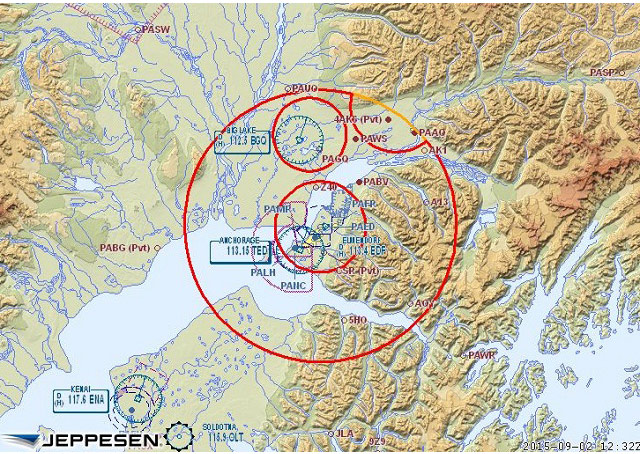Presidential TFRs have major impact on Alaska
Secret Service allows seaplanes to fly

Recognizing that “Alaska is different,” the Secret Service is allowing seaplane activity to continue in the Anchorage area during President Barack Obama’s visit through Sept. 2. Normally, seaplane operations are among the prohibited activities within a presidential temporary flight restriction (TFR). But during meetings with the Secret Service and Transportation Security Administration, AOPA, the Alaska Airmen’s Association, the Alaska Air Carriers Association, and others pointed out that seaplane activity is essential in Anchorage.
While the initial notice accounted for seaplanes needing to leave the TFR by providing for screening at Lake Hood, it made no provision for them to return. When AOPA and others brought this to the attention of the Secret Service, the TFR was modified to include a gateway at Wasilla Lake for seaplanes to be screened before entering the inner ring of the TFR.
The TFR for Anchorage consists of two rings—a central core that extends in a 10-nautical-mile radius and an outer core that extends to 30 nm in every direction. Aviation organizations were able to work with the Secret Service to modify the TFR hours in the days prior to the president’s visit to better accommodate general aviation traffic. TFRs also have been established for other segments of the president’s trip, including visits to Seward, Dillingham, and Kotzebue.
“We appreciate the fact that both Secret Service and TSA were willing to work with us to reduce the impact of these TFRs on general aviation operations,” said Tom George, AOPA Alaska regional manager. “More than any other state, Alaska depends on GA to keep moving, and we simply can’t afford to ground GA for days on end.”
But, George noted, some concerns remain.
Neither Kotzebue nor Dillingham has road access, leaving aircraft as the primary means of reaching both towns. The complete disruption of GA flights during the president’s visits to those areas could have a significant impact on residents.
In addition, the outer ring of the Anchorage TFR includes numerous airports where many based aircraft don’t carry transponders. Those aircraft, George explained, will essentially be grounded any time the TFR is in operation, creating a significant impact on GA activity.
Also at this time of year, many people visit remote wilderness locations where they don’t have radio access. As a result, pilots returning to Anchorage from more remote parts of the state may not know about the TFRs.
“We’ve done our best to reduce the impacts and have provided a lot of information to our members and other pilots throughout the state,” said George. “I would just urge pilots to be extra vigilant and check and double check notams because circumstances can change in the blink of an eye.”



